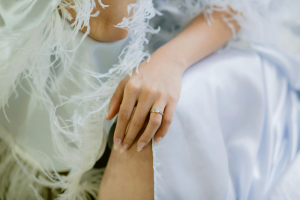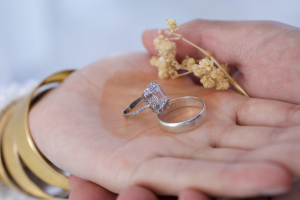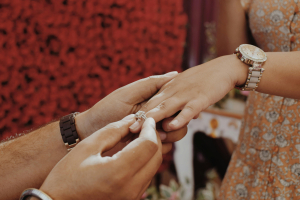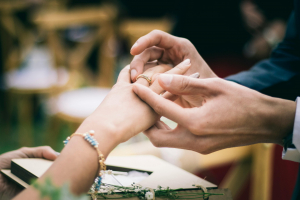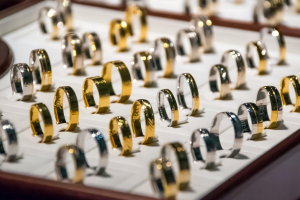GBP
/
GBP
/
Shipping to:
Currency:
How to Buy Engagement Rings with Lab-Grown Diamonds | A Complete Guide
Thinking about popping the question with an engagement ring that’s stunning, sustainable, and won’t break the bank? You’re not alone.
More and more couples are turning to lab-grown diamond engagement rings for their beauty, affordability, and ethical benefits.
In this guide, we’ll walk you through everything you need to know about choosing the perfect lab-grown diamond engagement ring, from understanding the basics to finding the ideal setting.
What Are Lab-Grown Diamonds?
Lab-grown diamonds are real diamonds, but instead of being formed naturally over millions of years, they’re created in a laboratory under conditions that mimic those found in the Earth’s mantle.
They share the same chemical composition, optical properties, and physical characteristics as mined diamonds, which means they look and sparkle just the same.
The main difference lies in their origin.
While natural diamonds are extracted from deep within the Earth, lab-grown diamonds are created using high-tech processes like Chemical Vapour Deposition (CVD) or High-Pressure High-Temperature (HPHT) methods.
So, if you’re worried about lab-grown diamonds being “fake,” rest assured—they are genuine diamonds in every way that matters.
Why Choose a Lab-Grown Diamond Engagement Ring?
Opting for a lab-grown diamond engagement ring comes with a range of benefits that might just make it the perfect choice for your special moment.
Ethical and Environmental Benefits
One of the main reasons couples choose lab-grown diamonds is because they are considered a more ethical and eco-friendly option.
Since lab-grown diamonds don’t require mining, they help reduce the environmental impact associated with traditional diamond extraction.
Plus, there are no concerns about unethical labour practices, so you can be sure your diamond is conflict-free.
Affordability
Lab-grown diamonds are typically 30-40% less expensive than their mined counterparts, meaning you can get a bigger, better-quality diamond for the same price.
This can be especially appealing if you’re working within a budget but still want to wow your partner with a stunning ring.
Quality and Customisation
When it comes to quality, lab-grown diamonds hold their own.
They are graded using the same standards as natural diamonds, based on the 4Cs: cut, colour, clarity, and carat.
Additionally, lab-grown diamonds offer a wide range of customisation options, allowing you to create a truly personalised engagement ring that reflects your partner’s unique style.
How to Evaluate Lab-Grown Diamonds
Before making a purchase, it’s important to understand how to assess the quality of lab-grown diamonds.
The 4Cs are key in this regard.
The 4Cs: Cut, Colour, Clarity, and Carat
These four characteristics are used to determine the quality and value of any diamond, whether it’s lab-grown or natural:
- Cut: This refers to how well the diamond has been shaped and polished, which affects its sparkle. A well-cut diamond will reflect light beautifully, while a poorly cut diamond may appear dull.
- Colour: Diamonds are graded on a scale from D (colourless) to Z (light yellow or brown). The less colour a diamond has, the more valuable it tends to be.
- Clarity: This measures the number of internal or external flaws, known as inclusions and blemishes. The fewer imperfections, the higher the clarity grade.
- Carat: Carat refers to the weight of the diamond. Larger diamonds are typically more valuable, but quality matters just as much as size.
Certification
Make sure any lab-grown diamond you buy is certified by a reputable grading organisation, such as the International Gemological Institute (IGI) or the Gemological Institute of America (GIA).
Certification ensures that the diamond’s quality has been independently verified, giving you peace of mind about your purchase.
If you're looking for a round lab-grown diamond, check out round lab-grown diamond options.
Comparing Prices
To get the best value, compare prices based on the quality grades of the 4Cs.
Online tools and price comparison websites can help you find the best deals.
Just remember, the cheapest option isn’t always the best—consider quality and warranty options as well.
Choosing the Right Ring Setting for Lab-Grown Diamonds
The setting is just as important as the diamond itself, as it plays a big role in the overall appearance of the ring.
Here are some things to consider when choosing a setting.
Popular Settings for Lab-Grown Diamond Rings
Common settings for engagement rings include:
- Solitaire: A classic choice, featuring a single diamond. It’s timeless and elegant, allowing the diamond to take centre stage.
- Halo: This style surrounds the central diamond with a circle of smaller diamonds, adding extra sparkle.
- Vintage: Inspired by older styles, vintage settings often feature intricate details and patterns.
Considering the Metal Type
The metal used in the ring setting can impact both the look and durability of the ring.
Popular choices include:
- Platinum: Known for its durability and hypoallergenic properties, platinum is a great choice for everyday wear.
- White Gold: Offers a similar appearance to platinum but at a lower price.
- Rose Gold: Adds a warm, romantic touch to the ring.
- Yellow Gold: A traditional choice that provides a classic look.
Matching the Setting to the Diamond’s Shape
Different settings complement different diamond shapes.
For example:
- Round diamonds suit nearly any setting.
- Princess or cushion cuts look great in halo or solitaire settings. If you're interested in a cushion-shaped diamond, check out cushion lab-grown diamond options.
- Emerald or oval shapes can create a vintage-inspired look. You can find emerald lab-grown diamonds and oval lab-grown diamonds to fit these styles.
Where to Buy Lab-Grown Diamond Engagement Rings
You can find lab-grown diamond engagement rings in various places, but it’s important to choose a reputable retailer.
Online Jewellers
Online jewellery stores often have a wider selection of lab-grown diamonds and can offer competitive prices due to lower overhead costs.
Many sites provide virtual consultations, high-quality images, and even 3D videos to help you make an informed decision.
High Street Jewellers
If you prefer to see the ring in person before buying, visiting a high street jeweller can be beneficial.
Some jewellers now offer lab-grown diamond options, allowing you to view the diamonds and settings up close.
Custom Jewellers
For a truly personalised touch, consider working with a jeweller who specialises in custom-made rings.
This approach allows you to create a unique engagement ring that perfectly matches your partner’s style and preferences.
Tips for Buying Lab-Grown Diamond Engagement Rings
To help you make the best choice, keep these tips in mind:
Set a Budget
Decide how much you’re willing to spend before you start shopping.
Setting a budget will help narrow down your options and ensure you don’t overspend.
Do Your Research
Take the time to learn about lab-grown diamonds, including quality grades, pricing, and reputable retailers.
The more you know, the better equipped you’ll be to make a smart purchase.
Consider Your Partner’s Style
Think about what styles and types of jewellery your partner likes.
Do they prefer classic, modern, or vintage looks? Are they drawn to certain metals or diamond shapes? These considerations will help you find a ring they’ll adore.
Caring for a Lab-Grown Diamond Engagement Ring
Once you’ve found the perfect ring, you’ll want to keep it looking its best.
Here’s how:
- Cleaning: Clean the ring regularly using a gentle solution of warm water and mild soap. Use a soft toothbrush to scrub the diamond and setting gently.
- Storage: When not wearing the ring, keep it in a soft-lined box or a jewellery pouch to avoid scratches.
- Professional Inspections: Take the ring to a jeweller for regular inspections, especially if you notice any loose stones or damage.
Frequently Asked Questions (FAQs)
Are lab-grown diamonds real diamonds?
Yes, lab-grown diamonds are real diamonds. They share the same physical, chemical, and optical properties as mined diamonds, making them indistinguishable from natural diamonds to the naked eye.
How much cheaper are lab-grown diamonds compared to natural diamonds?
Lab-grown diamonds are usually 30-40% less expensive than natural diamonds of similar quality. This cost-effectiveness allows you to get a larger or higher-quality diamond for your budget.
Do lab-grown diamonds hold their value?
While lab-grown diamonds tend to depreciate faster than natural diamonds, they still retain some value. The appeal of lab-grown diamonds often lies in their affordability and ethical benefits rather than long-term investment potential.
Can you insure a lab-grown diamond engagement ring?
Yes, lab-grown diamond engagement rings can be insured just like natural diamond rings. Most jewellery insurers offer policies that cover loss, theft, or damage, so be sure to get an appraisal and purchase a suitable insurance policy.
Are lab-grown diamonds detectable from natural diamonds?
Specialised equipment is required to distinguish between lab-grown and natural diamonds. To the naked eye and even under a jeweller’s loupe, lab-grown diamonds look identical to mined diamonds.



